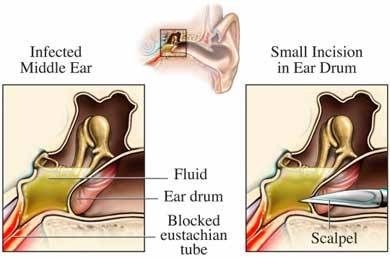"Is my child developing normally?"
This question is almost guaranteed during nearly all well child encounters in the pediatric office setting. Parents, rightfully so, are commonly concerned about their child's development and need a small amount of reassurance from their professional caregiver. What are the guidelines that all pediatricians follow?
The pediatrician references a set list of known guidelines when evaluating the development of a child. He or she often does this in three ways: using an Ages and Stages Questionnaire (sensitivity 75%, specificity 81%) filled out by the parent, asking the parent specific questions about the child and physically examining or interviewing the child.
Below is the list of developmental milestones. It's important to remember two things:
1) The milestones are simply a guide: physicians use it to help determine if a child has fallen below normal when compared to other age-matched children. It is the job of the pediatrician to recognize a child that has fallen behind in one area and to offer support or resources to help him or her catch up (i.e, the Early Steps program).
2) All children develop differently. One child may meet all milestones on time while another may be persistently behind in one area. It's important to always be patient with (and supportive of) your child.
Pediatric milestones by age:
1 month
Vision: regards face, fixes transiently
Social: smiles spontaneously
6 weeks
Vision: follows to midline
Language: vocalizes (other than crying)
2 months
Hearing: alert to sound- localize by turning head and eyes
Social: cuddle when held, smiles responsively
10 weeks
Gross motor skills: lifts head prone 45-90 degrees
3 months
Language: coos (ooh, ah), laughs
Gross motor skills: head control when pulled to sitting position
Fine motor skills: hands together
4 months
Vision: follows 180 degrees (visual tracking)
Language: squeals, makes raspberry sound, babbles d,t,z then b,m,p
Gross motor skills: may sit with support, raise head when lying prone
Fine motor skills: grasps rattle
5 months
Gross motor skills: rolls over (prone to supine)
6 months
Gross motor skills: pulls to sit without head lag, reach for toy, rolls both ways, sits with support and alone
Social: stretches arms to be picked up, shows likes
Warning sign: significant head lag, persistent fisting, persistent squint, persistent asymmetric tonic neck reflex, inability to roll over
8 months
Hearing: turns to voice
Gross motor skills: sits without support
Fine motor skills: transfers objects hand to hand, feeds self cracker
9 months
Hearing: turns directly to sound
Gross motor skills: crawls
Social: plays games, finger feeds, holds own bottle, object permanence
10 months
Gross motor skills: pulls to stand
Language: mama, dada, nonspecific, imitate speech sounds, repetitive consonants
1 year
Language: mama, dada specific one word other than mama and dada
Gross motor skills: pivots while sitting
Fine motor skills: bangs objects with hands, thumb/finger grasp, grasps by radial raking, "pincers" grasp, drops and throws toys
Social: indicates wants other than crying, comes when called
Warning sign: failure to sit without support, persistent squint
13 months
Gross motor skills: stands momentarily, cruises (stands and moves between large objects in room by hanging on)
14 months
Gross motor skills: walks well
15 months
Language: immature jargonizing, understands "no", one-step commands, can point to body parts
Gross motor skills: climbs
18 months
Gross motor skills: kicks or throws ball
Fine motor skills: turns pages, feeds self with spoon
Social: follow simple commands, cuddles toys, enjoy imitative play, copies household tasks, plays some with others, symbolic play (thought)
Warning sign: inability to stand, no pincer grasp, no spontaneous vocalizations, abnormal hand posture
20 months
Language: 3 words other than mama/dada
2 years
Language: 50 words in vocabulary, "NO", can follow 2-part commands, points to named part of body, combines 2 words
Gross motor skills: run, walks up and down stairs with help, climb stairs alternating steps
Fine motor skills: spills little, uses cup, washes/dries hands, may help with dressing, eats by self, scribble spontaneously builds 6-cube tower, uses spoon, removes garment
Social: asks to go to toilet, plays with others (imitation), solitary parallel play (play side-by-side)
Warning sign: absence of recognizable words, lack of walking, tremor or ataxia
3 years
Language: gives first and last name, age, address, name parts of body, speech understandable to family, 3-4 word sentence, 250 word vocabulary, uses plurals, prepositions, pronouns
Gross motor skills: jumps in place, stand on 1 foot, kick ball, rides tricycle
Social: mostly toilet trained, participates in family life, plays interactive games (for example, tag)
Warning sign: speech not understood 75% of time
4 years
Gross motor skills: can heel walk, hops on 2 feet, climb ladder, tiptoe, hop, jump, balances on 1 foot for 5 seconds
Fine motor skills: dresses without supervision, copies, buttons clothes, uses pencil, glue, scissors, copies line and circle
Social: brush teeth, wash hands, toilet, separates easily from mother, enjoys jokes with parents, games with rules
5 years
Vision: recognizes 3 of 4 colors
Language: counts 10 objects, names 4 colors; can define spoon and cat, can narrate story
Gross motor skills: skips
Fine motor skills: draws 6-part man (head, body, arms, legs), dresses/undresses without supervision, copy triangle, cut and paste
Social: understand good/bad, right/wrong
6 years
Language: copies sound, composition of door/shoe/spoon
Gross motor skills: hop on 1 foot, walks backward heel-toe
- If you have any questions regarding your child's development, it's important to ask your pediatrician
- Research suggests that faster attainment of developmental milestones in first year of life associated with better educational outcomes at ages 16 and 31 years
- Studies have shown that bed-wetting at age 53 months is associated with a delay in developmental milestones
- Speech should be intelligible by 3 years of age. If it isn't, the pediatrician will order a hearing evaluation
Reference
Developmental Milestones. Dynamed Database. Updated March 27, 2014. Accessed July 7, 2014.
























